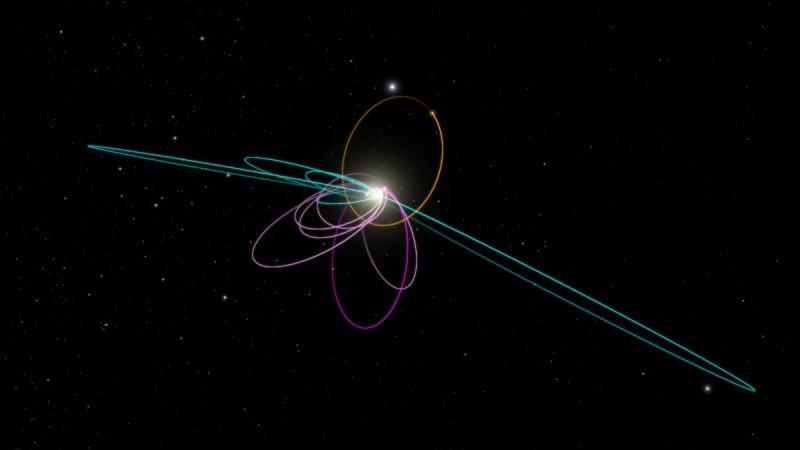
It seems that our solar system has not eight but nine planets after all, as has been confirmed by two California Institute of Technology researchers.
Researchers Konstantin Batygin and Mike Brown have discovered the planet's existence by experimenting with several mathematical models and computer simulations. However, they haven't visually detected the planet yet.
According to Caltech: "The planet has a mass about 10 times that of Earth and orbits about 20 times farther from the sun than Neptune. That means it would take this new planet between 10,000 and 20,000 years to make just one full orbit around the sun."
Science Magazine has reported that the researchers found some specific objects in the Kuiper Belt, a field of asteroids, comets and other debris made of ice. These objects were peculiarly pointing to a common direction, and that was their first hint that led to the discovery of the new planet.
Caltech has said Planet Nine is large enough to rule out any debate regarding its stature as a true planet — unlike Pluto, which was declared a "dwarf planet" in 2005.
As mentioned by CNN, Brown has said there have only been two true planets discovered since ancient times, and this would be a third.
"It's a pretty substantial chunk of our solar system that's still out there to be found, which is pretty exciting," he added.
Brown played a significant role in reclassifying Pluto as a member of the new "dwarf planet" category (and specifically as a plutoid).
He said: "All those people who are mad that Pluto is no longer a planet can be thrilled to know there is a real planet out there still to be found. Now we can go and find this planet and make the solar system have nine planets once again."
When asked how he plans to find the exact location of the planet, Brown said that depended on where Planet Nine was in its "bizarre, highly elongated orbit," with many telescopes having a shot at finding it.
"We hope other people are going to get inspired and start searching," he concluded.
















